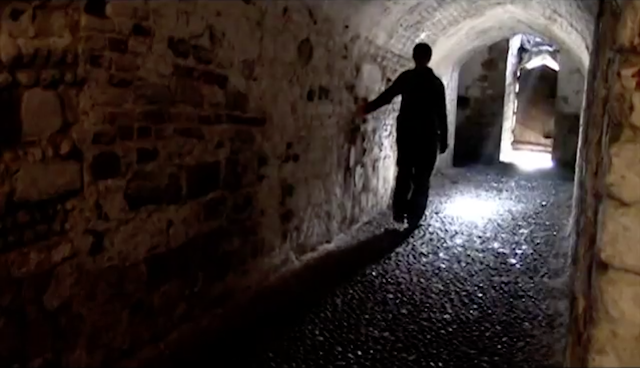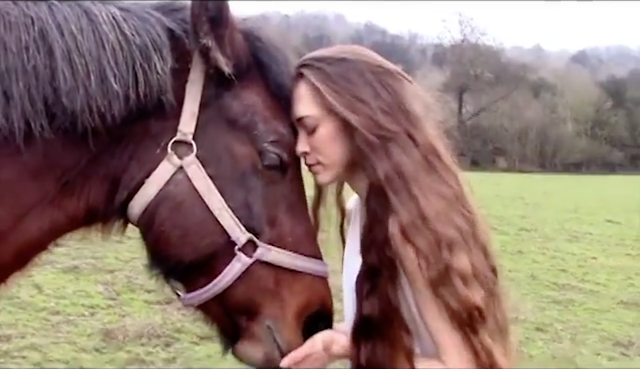The first major change we made on our storyboard would be the fact that we had to change locations from Upnor Castle to Deal Castle. We then had to adapt our storyboard to this new location. We were able to chose a location that was relatively similar to the original one so we could get the majority of the shots we originally planned. We did not change the storyboard as neither of us had actually been there so we adapted our shots whilst on location which was effective as this enabled us to use the location to our advantage as we were inspired to use certain shots from actually being there and seeing all the areas of the Castle.

For example, in our storyboard show above we planned on having the soldier character walking through a tunnel with their hand extended backwards. We were still able to achieve this shot despite the location change, above is a screen shot of the result.

Above is another screenshot. However, this shot was not originally planned and is not on our storyboard. This is because we were inspired to do this shot as whilst on location we noticed the omnious atmosphere created by the dramatic lighting that shone through the tunnel as Janna walked back through the tunnel. So we decided to get a shot of Janna standing in the tunnel with the back lighting creating a dramatic shadow paired with a tilt camera movement at a low angle to really create a powerful shot with the soldier character dominating the shot.
At all the locations we filmed extra shots and tailored particular shots from our storyboard to the location. We did this at Bodiam Castle as we did many extra shots and we ended up using quite a few of them in our final cut as we felt that they were more effective than the original ones planned. We also left a section in our storyboard for the 'repeated scenes', this is because we felt that these shots could not be planned but should evolve with us as we went through the locations. We also left this section blank as we knew that we would be able to get a lot of extra footage, as we knew this from experience as we know that we can be quite creative with our shots and come up with many more shots ,whilst at the locations, then we originally planned.
Here is the section of the story board that we left blank for the repeated scene and an example of an extra shot we did at Bodiam Castle and used in the final cut of our music video in the repeated section. In this shot the 'peace' character walks down some steps and out the door. We were inspired to do this shot as we felt that this particular area would create a good location and an effective shot with the lighting which makes the white dress glow and appear almost ghost like with the brightness.
Again when on location to film the scenes with the animals we used our storyboard as guidance as what we needed to capture to portray the right meaning required to create an effective narrative. However, we could not stick completely to the storyboards as we had to adapt to the animals requirements as we could not get them to do exactly what we wanted. However, despite this we were able to get the shots that were needed to tell the narrative and we also improved on some to make them more creative and again got some extra shots that we ended up using in our final cut.

Above is the original plan on our storyboard for the horse scene. As you can see we originally planned on alternating the beat and having some shots that ran the length of two beats, one of which was of the horses feet in motion. We did get a shot similar to this but whilst editing we decided against this as we had a variety of other shots that we felt were much more effective, we also did not expect to stick to this part of the storyboard as animals are unpradictable so we knew we would have to adapt slightly. Below is an example of one of those extra shots which we used.








